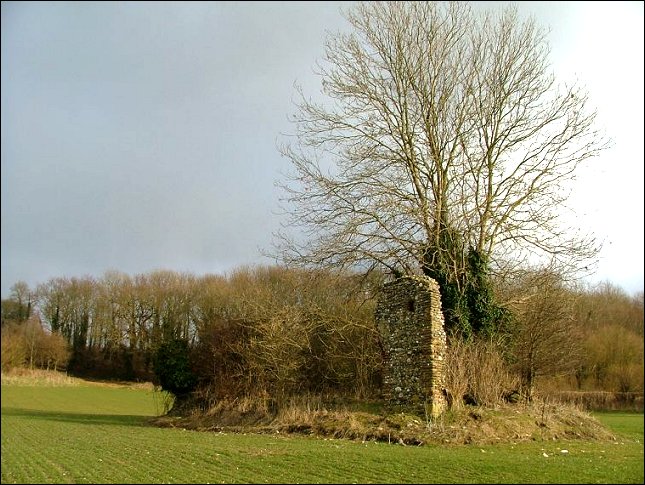| |
|
St
Edmund, Lyng
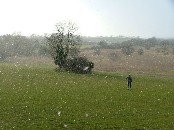 |
|
It
was towards late afternoon on a bright, crisp,
blustery day in early March, and we were driving
very slowly along a narrow lane through the woods
and meadows east of Lyng, looking for a ruin. The
road undulated wildly, and it was hard to see
beyond the hedges. All we knew was that something
survived. Pevsner reports an arch, but he saw it
in the 1950s, and it was unlikely to have been
checked for the later editions, I thought. We didn't
know how far off the road the ruin was, or even
exactly which side. Long sheets of grey cloud
swept in quickly from the north, carried on the
back of the biting wind. As we came to the top of
the next rise, it started to snow. To be honest,
my hopes weren't high.
|
There was
a bridleway through the woods, and we parked in the mouth
of it, for the simple reason that there was nowhere else
to park. We got out into the full force of the blizzard,
and quickly got back into the car again - there was no
point tramping across the countryside if we couldn't even
see what we were looking for. Eventually, the feathery
gusts subsided, and we could stand on the road and look
around.
The snow
hadn't settled. On the far side of the lane was a wide,
undulating field leading down to the infant Wensum
winding along the bottom. The field was a sea of vivid
green shoots, barley perhaps, but out in the middle
floated a little island, a tree with a copse beside it.
It could have been a barrow, or an old marl-pit. It could
have been anything, but we had no better ideas and so we
set off towards it.
As we
walked, I was trying to make sense of the shape, and
perhaps to make out a detail that might suggest it was
what we were looking for. I knew that Peter was too, and
as it turned out he saw it first - "look, there's a
wall of flint behind the tree!" he shouted above the
wind.
I couldn't
see it. I wanted to, but the icy blast in my eyes made
focusing difficult. We headed on, and then I saw it, or
thought I did. And then I was sure. By now, Peter had
lost sight of what he'd seen, and he was apologising,
saying that he must have been mistaken, but I was saying
"no, look, there it is, beyond the tree!" And
then we were there.
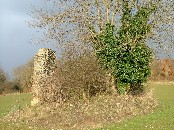 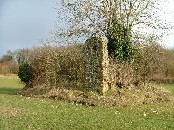 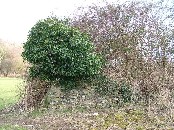 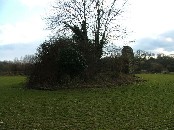
If there
was ever a surviving arch, it has gone now. It must have
been the north doorway, because the red-brick outline of
the western side survives in an outcrop of flint wall
about three metres tall. It is directly behind the tree,
and must be invisible in Summer. Just beyond the
surviving fragment of archway, to the west, is a brick
corner, and so I think that this must have been a
towerless church.
All around
us in the field were scattered thousands of tiny flint
fragments, spread from the ruin by centuries of
ploughing. They lie up to about ten metres from the
mound, thinning out as you get further away, until they
become indistinguishable from the normal flintiness of
Norfolk soil.
| We
climbed inside the ruin, but there was nothing
else to see. Hardly anything survives of Lyng's
former second church. Peter, who is still living
in the pre-digital age, used the last of his film
in recording it. We felt pleased with ourselves,
and wandered carelessly along the northern side
of the mound imagining what it must once have
been like. Just as we got to the east end of the
copse, we saw another outcrop of flint, the lower
part of what must have been the north chancel
wall. "Just as well you don't need to record
everything", I joked, "otherwise you'd
need to go back to the car to get a new
film!" But Peter didn't answer. He
was already striding back across the field to his
car, the snow starting to fall heavily again as
he went for another film. I wrapped my jacket
around myself and followed him, and then stood on
the edge of the field and watched as he headed
back into the blizzard, towards a church that was
barely there. I admired his determination, his
attention to detail. It was a journey which I was
sure Pevsner's revising editors had never made.
|
|
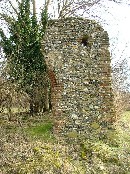 |
Simon Knott, April 2006
|
|

